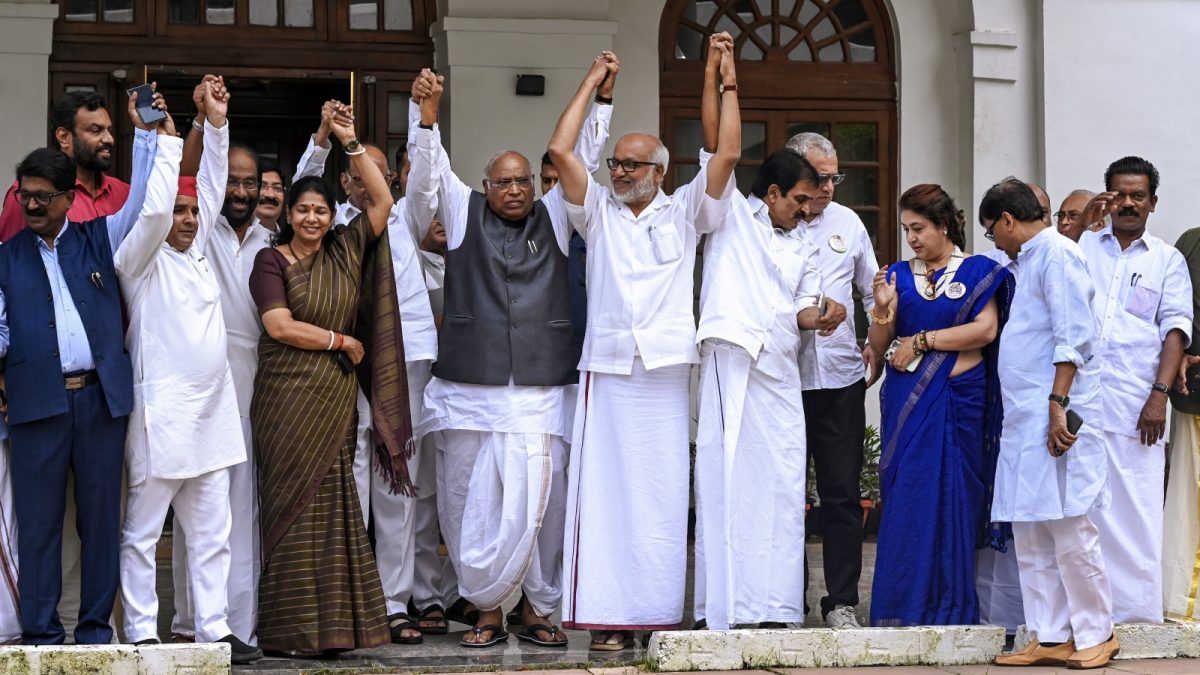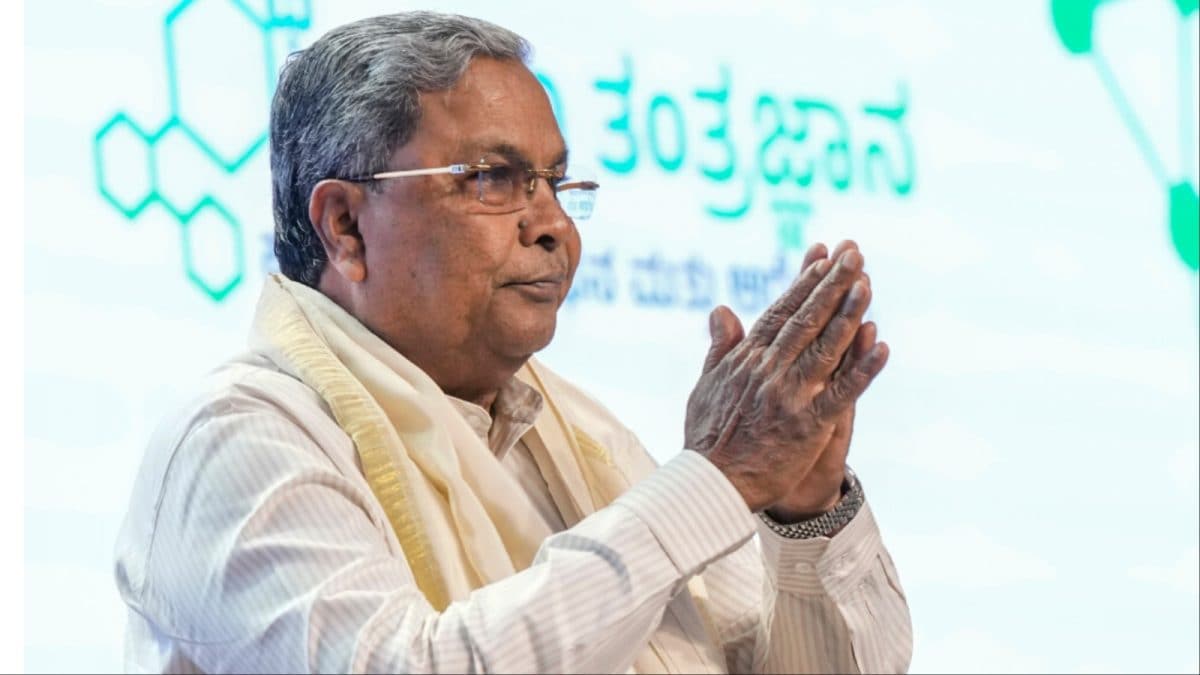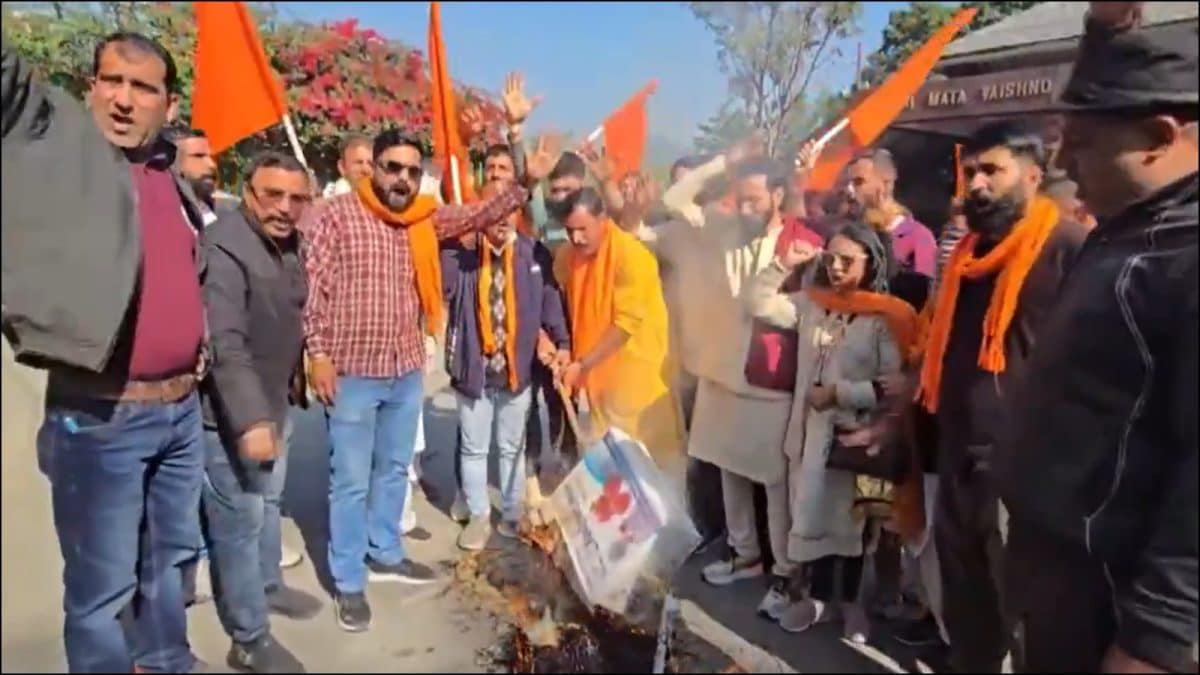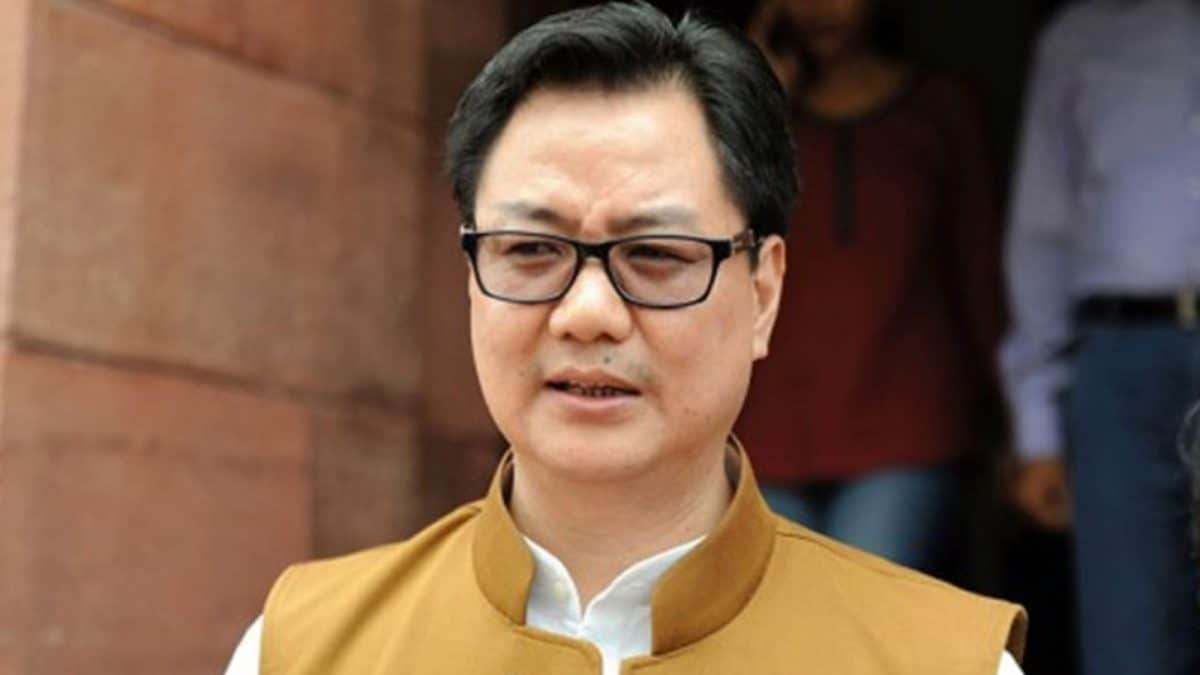Last Updated:
Even as INDIA bloc leaders campaigned side by side, the alliance’s fragile foundation showed through moments of discord and distrust

Congress President Mallikarjun Kharge with Shiv Sena (UBT) MP Arvind Sawant, Samajwadi Party MP Dharmendra Yadav, DMK MP Kanimozhi Karunanidhi, Congress MP K.C. Venugopal, TMC MP Satabdi Roy, and others after a meeting of the INDIA bloc. (PTI Photo)
If there was one thing that stood out in the monsoon session of Parliament, it was the unusual bonhomie and unity displayed by the INDIA bloc. From a joint strategy inside and outside the House to the unanimous choice of a vice-presidential candidate, the bloc—for once—looked like a cohesive force.
But the underlying fissures are not easy to camouflage, not when the alliance itself is inherently fragile and made up of contradictory partners.
Take the Aam Aadmi Party (AAP), for instance. It walked out of the INDIA bloc earlier, yet came together briefly to back the Opposition’s vice-presidential candidate. A senior Opposition source said, “We managed to change the terminology from INDIA bloc’s candidate to Opposition candidate, thereby signalling that even those who are not part of the bloc are welcome to support Sudershan Reddy.”
Amid this show of unity, one party stood out for its relentless aggression: Mamata Banerjee’s Trinamool Congress. With West Bengal elections just seven months away, the TMC sharpened its attacks on the BJP, staged repeated protests inside and outside Parliament, and positioned itself as a key driver of the Opposition’s agenda.
From entering the Well of the House with placards to singing works of Rabindranath Tagore and Kazi Nazrul Islam, the party deployed uniquely cultural forms of protest. Trinamool leaders say they were “more aggressive than others” in taking on the BJP, pointing to electoral results to back that claim—having cut the BJP’s Lok Sabha tally in Bengal from 18 in 2019 to 12 in 2024.
The party also played a role in consensus-building around former Justice Sudershan Reddy, ensuring that the choice was projected as an “Opposition candidate” rather than an INDIA bloc one. For Banerjee’s camp, this was a significant shift from 2022, when the TMC abstained from the vice-presidential poll after accusing Congress and the Left of sidelining it by naming Margaret Alva. This time, Banerjee’s party insisted on a non-political face with a record of public service, signalling its determination to shape the Opposition’s agenda.
Still, cracks were visible. The TMC had decided, on consensus, that no one would intervene in the Home Minister’s presentation of the three bills. But when Congress MP Manish Tewari objected to the bills, the TMC was visibly irked and chose silence inside the House. Instead, its leaders raised objections outside, alleging that MPs Mitali Beg and Shatabdi Roy had been manhandled, and that another MP, Abu Taher Khan, had been jostled.
Still, the TMC claims credit for keeping the bloc together. The party points out that it reached out to AAP, with Mamata Banerjee personally opening lines of communication. The sight of Arvind Kejriwal, after months of bitterness, standing alongside Congress leaders as the vice-presidential candidate campaigned to AAP was telling.
In the Rajya Sabha too, the TMC claims to have taken the lead by displaying placards against the Home Minister’s bill and rushing to the well of the House, even as most other Opposition MPs, including those from Congress, stayed away. As one TMC leader put it, “We have been the magnet and driving force which brought forces together.”
The real test, however, begins now. With Parliament adjourned and the vice-presidential election soon to be behind them, the challenge is to stay united. For the moment, the distance between the Congress and TMC—once not even on speaking terms, with TMC boycotting INDIA bloc meetings—has narrowed. They have walked a long way together. But the question remains: how long will this uneasy journey last?

Pallavi Ghosh has covered politics and Parliament for 15 years, and has reported extensively on Congress, UPA-I and UPA-II, and has now included the Finance Ministry and Niti Aayog in her reportage. She has als…Read More
Pallavi Ghosh has covered politics and Parliament for 15 years, and has reported extensively on Congress, UPA-I and UPA-II, and has now included the Finance Ministry and Niti Aayog in her reportage. She has als… Read More
Read More








